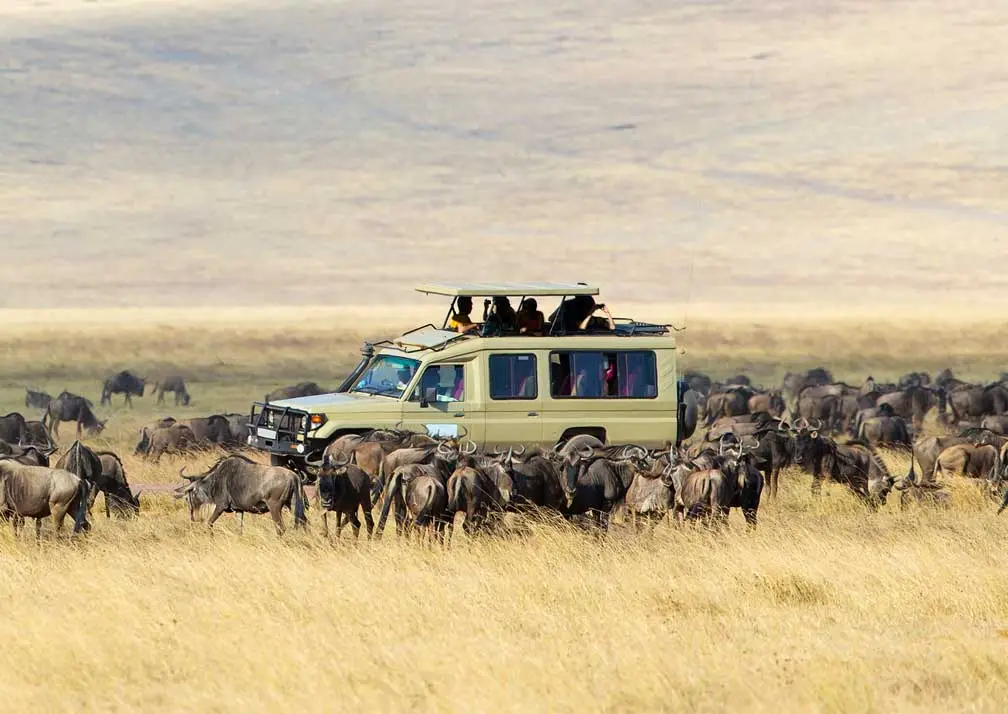Ultimate Guide: 8-Day Kilimanjaro Climbing Tour via Lemosho Route
Explore the 8-Day Kilimanjaro Climbing Tour via the Lemosho Route. This ultimate guide covers itinerary, altitude tips, packing lists, and expert advice for a safe and successful summit.
The Mount Kilimanjaro Lemosho Route offers the most scenic and gradual approach to Africa’s highest peak, standing majestically at 19,341 feet above sea level. This exceptional 8-day climbing adventure combines breathtaking landscapes with optimal acclimatization opportunities, making it the preferred choice for serious mountaineers and adventure enthusiasts alike.
Our Kilimanjaro Lemosho Route 8-day package provides everything needed for a successful summit attempt, including professional mountain guides, porters, high-quality camping equipment, and nutritious meals throughout your journey. The route begins at Londorossi Gate and traverses through five distinct ecological zones, from lush rainforests to arctic-like summit conditions.
What makes this tour special is its carefully designed itinerary that follows the “climb high, sleep low” principle, significantly increasing your chances of reaching Uhuru Peak. The Lemosho Route boasts an impressive 85% success rate, which increases to 95% when utilizing strategic camping locations like Kosovo Camp. Unlike other routes, Lemosho remains less crowded during the initial days, allowing for a more intimate connection with Kilimanjaro’s pristine wilderness.
The tour includes pre- and post-trek accommodation at Mount Meru Hotel in Arusha, airport transfers, all park fees, professional guides certified in wilderness first aid, experienced porters, customized all-weather tents, private toilet facilities, and three nutritious meals daily. This adventure is perfect for physically fit individuals seeking a challenging yet achievable goal, with proper preparation and determination being the key ingredients for success.
Book Your Climb NowDetailed 8-Days Kilimanjaro Climb Day by Day Itinerary
This 8-day Lemosho Route itinerary is crafted to maximize your chances of reaching Uhuru Peak while enjoying Tanzania’s stunning landscapes. Below is a day-by-day breakdown of your Kilimanjaro climbing adventure with Capable Africa Tours.
Day 1: Londorossi Gate to Forest Camp
Your adventure begins with registration at Londorossi Gate (7,742 ft), followed by a scenic drive to the trailhead. The 4-mile hike through lush rainforest takes 3-4 hours, ascending to Forest Camp (9,498 ft). Lunch is served on the trail, and dinner awaits at camp with time for rest and acclimatization briefings.
Day 2: Forest Camp to Shira 1 Camp
The 5-mile trek takes 5-6 hours, climbing from 9,498 ft to 11,500 ft. You’ll emerge from the forest onto the spectacular Shira Plateau, with breakfast at camp, packed lunch on the trail, and dinner at Shira 1 Camp while enjoying panoramic mountain views.
Day 3: Shira 1 to Moir Hut
This 7-mile acclimatization day covers 5-7 hours of hiking, ascending to 13,800 ft at Moir Hut. The route crosses the Shira Plateau’s northern circuit, offering incredible views and gradual altitude gain essential for proper acclimatization.
Day 4: Moir Hut to Barranco Camp
A crucial acclimatization day involving a climb to Lava Tower (15,223 ft) before descending to Barranco Camp (13,044 ft). This 7-kilometer journey takes 4-6 hours and perfectly demonstrates the “climb high, sleep low” principle.
Day 5: Barranco Camp to Karanga Camp
The exciting Barranco Wall scramble begins your day, followed by a 3-mile trek taking 4-5 hours to reach Karanga Camp (13,123 ft). This shorter day allows for rest before the final summit push.
Day 6: Karanga to Barafu Camp
The final 3-mile approach to Barafu Camp (15,288 ft) takes 4-5 hours across alpine desert terrain. Early dinner and rest prepare you for the midnight summit attempt.
Day 7: Summit Day
Midnight departure for the 7-8 hour summit climb to Uhuru Peak (19,341 ft), followed by descent to Mweka Camp (12,467 ft) for overnight rest.
Day 8: Descent to Mweka Gate
Final 3-4 hour descent through rainforest to Mweka Gate (5,380 ft) for celebration and certificate presentation.
What to Expect on your 8-Day Kilimanjaro Climb
The Kilimanjaro Lemosho Route takes you through Mount Kilimanjaro National Park, a UNESCO World Heritage Site covering 1,688 square kilometers of diverse ecosystems. Your journey begins in the western approach through Londorossi Gate, leading you across the spectacular Shira Plateau, one of the world’s largest volcanic calderas.
Key destinations along the route include Forest Camp, where you’ll experience the mystical cloud forest filled with ancient trees draped in moss and home to colobus monkeys and various bird species. The Shira Plateau offers panoramic views of Mount Meru and the Kenyan highlands, while the dramatic Barranco Valley presents the famous Barranco Wall, a thrilling scramble that adds excitement to your adventure.
The route’s crown jewel is Uhuru Peak, the highest point in Africa, where you’ll witness sunrise over the continent while standing on the rim of Kibo crater. The glaciers and ice fields near the summit create an otherworldly landscape that few people ever experience firsthand.
Wildlife encounters are limited but memorable, including chances to spot blue monkeys, colobus monkeys, and various bird species in the lower elevations. The changing vegetation zones provide incredible photographic opportunities, from dense rainforest canopies to alpine desert landscapes dotted with giant groundsels and lobelias.
Each camp location offers unique scenic highlights, from the expansive views at Shira Camp to the dramatic rock formations at Barranco Camp. The route’s western approach provides stunning sunset views and less crowded trails during the initial days, creating an intimate wilderness experience that sets Lemosho apart from other Kilimanjaro routes.
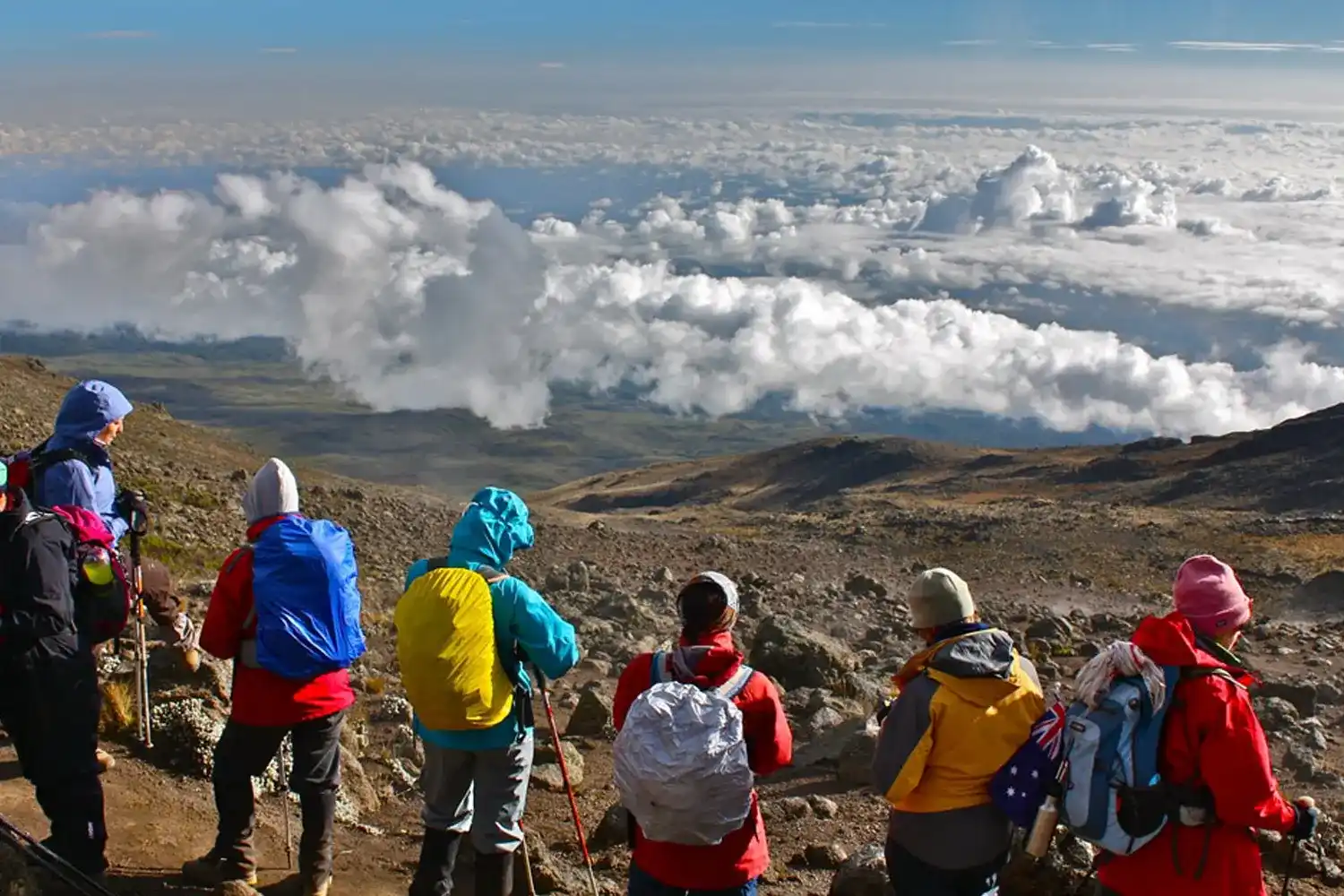
What’s Included & Excluded in your Package
Included in Your Package:
All Kilimanjaro National Park fees and conservation fees are covered, ensuring legal access to this protected wilderness area. Professional mountain guides certified in wilderness first aid lead your expedition, supported by experienced porters who carry equipment and supplies. Pre-trek accommodation at Mount Meru Hotel in Arusha includes dinner and breakfast, while post-trek accommodation provides a comfortable recovery environment.
During the climb, you’ll stay in high-quality, customized all-weather tents with upgraded zippers and flysheets designed for mountain conditions. Private toilet tents and solar-lit dining tents enhance comfort and hygiene standards. Three nutritious meals daily are prepared by professional chefs, with hot drinks and afternoon snacks included.
Emergency equipment includes oxygen supplies and comprehensive medical kits, while airport transfers ensure seamless logistics. All camping equipment, sleeping mats, and dining facilities are provided, along with water purification tablets and guidance on safe drinking practices.
Excluded from Your Package:
International flights to Kilimanjaro International Airport require a separate booking. Tips for guides, porters, and support staff are customary but not included, typically ranging from $200-300 total per climber. Tanzania visa fees ($50-100 depending on nationality) and travel insurance are personal responsibilities.
Personal climbing gear, including sleeping bags, hiking boots, clothing layers, and accessories, must be provided by climbers or rented separately. Alcoholic beverages, personal snacks, and souvenirs are additional expenses. Optional activities in Arusha, such as cultural tours or safari extensions, carry separate costs.
Medical consultations, vaccinations, and altitude sickness medications are personal health responsibilities. Laundry services, phone calls, and internet access incur additional charges when available.
Price Inclusions
- Round-trip transfers from Arusha
- Kilimanjaro National Park fees
- Expert guides and porters
- Full-board meals during the trek
- Camping equipment (tents, sleeping mats)
- Bottled water and water purification
- Summit certificate upon completion
Price Exclusions
- International flights to Tanzania
- Travel or medical insurance
- Tips for guides and porters (~$15–20 pp/day)
- Personal trekking gear (boots, sleeping bag)
- Optional activities in Arusha
- Alcoholic beverages
Where will you stay Before and After your 8-Day Kilimanjaro Climbing Tour
Pre and Post-Trek Accommodation:
Mount Meru Hotel in Arusha serves as your comfortable base, offering mid-range accommodation with en-suite bathrooms, hot showers, and reliable Wi-Fi. The hotel features a restaurant serving international and local cuisine, a bar for relaxation, and secure luggage storage. Rooms include comfortable beds with mosquito nets, air conditioning, and 24-hour room service availability.
Mountain Accommodation:
During your Kilimanjaro trek via the Lemosho Route, you’ll stay in premium camping facilities designed specifically for high-altitude conditions. Each climber receives a personal tent with upgraded zippers and reinforced flysheets capable of withstanding mountain weather. Tents accommodate two people with comfortable sleeping space and vestibule areas for gear storage.
Private toilet tents are established at each camp, maintaining hygiene standards and privacy throughout your journey. These facilities include biodegradable toilet paper and hand sanitizer, with waste management following Leave No Trace principles.
Dining tents feature solar lighting systems, comfortable seating, and weather protection during meals and briefings. These spacious facilities accommodate the entire group while providing shelter from wind, rain, or intense sun exposure.
Camp locations are carefully selected for optimal views, wind protection, and water access. Forest Camp offers rainforest ambiance with natural windbreaks, while Shira Camp provides expansive plateau views. Barranco Camp sits dramatically beneath towering rock walls, and Barafu Camp positions you perfectly for summit attempts.
Professional camp setup and breakdown services ensure efficient daily transitions, with porters establishing comfortable facilities before your arrival each day. Sleeping mats provide insulation from ground cold, while camp chairs offer comfortable seating during rest periods.
Food & Dietary Information: What Food you will Eat on your 8-Day Kilimanjaro Climbing Tour
Meal Quality and Preparation:
Professional chefs accompany every Kilimanjaro Lemosho Route expedition, preparing Nutritious meals using fresh ingredients and purified water. These culinary experts understand the increased caloric needs of high-altitude climbing, providing energy-dense foods that fuel your demanding daily activities while maintaining appetizing flavors and presentation.
Daily Meal Structure:
Breakfast typically includes porridge, eggs, toast, fruit, coffee, and tea, providing sustained energy for morning hiking. Packed lunches feature sandwiches, fruit, nuts, chocolate, and energy bars, designed for easy consumption during trail breaks. Dinners offer soup, main courses with meat or vegetarian proteins, vegetables, rice or pasta, and desserts.
Dietary Accommodations:
Vegetarian meals are standard offerings with advance notice, featuring protein-rich legumes, vegetables, and grains that meet nutritional requirements. Vegan options require specific advance arrangements but are fully accommodated with plant-based proteins and dairy alternatives.
Gluten-free meals can be provided with detailed advance notice, though options may be more limited due to remote location constraints. Halal dietary requirements are respected and accommodated with proper advance communication and planning.
Hydration Management:
Safe drinking water is provided throughout the expedition using purification tablets and boiling methods. Hot drinks, including tea, coffee, and hot chocolate, are served with meals and during afternoon breaks, helping maintain body temperature and providing comfort during cold conditions.
Special Considerations:
High altitude affects appetite and digestion, so meals are designed to be easily digestible while providing necessary nutrients. Snacks and energy foods are available between meals to maintain blood sugar levels and energy throughout demanding hiking days.
Food Safety:
All food preparation follows strict hygiene protocols to prevent illness, with hand-washing stations and sanitizers available at meal times.
8-Day Kilimanjaro Climbing Tour Price & Payment Information
8-Day Kilimanjaro Climb Base Price:
8-Day Kilimanjaro Climb Base Price is $2,890 per person for the standard 8-day Kilimanjaro Lemosho Route package, representing excellent value for this premium mountain experience. Pricing varies based on group size, with larger groups receiving reduced per-person rates due to shared costs for guides, equipment, and logistics.
Seasonal Price Variations:
Peak season rates (July-September, December-January) may include surcharges of $200-400 per person due to increased demand and premium guide availability. Shoulder seasons (March-May, November) often feature discounted rates of 10-15% below standard pricing.
Group Size Impact:
Solo climbers pay single supplements of approximately $500-800, while groups of 6-8 people receive discounts of $200-300 per person. Private group bookings for 10+ climbers can negotiate custom pricing with additional services.
How to Book for your 8-Day Kilimanjaro Climb
A deposit of 30% per person secures your booking, with the balance due 60 days before departure. Payment methods include bank transfers, credit cards (with 3% processing fees), and Pesapal options. Payment plans are available for bookings made more than 6 months in advance.
Cancellation Policy:
Cancellations more than 90 days before departure incur 25% penalties, while 60-90 day cancellations forfeit 50% of the total payment. Cancellations within 60 days result in full payment forfeiture unless covered by comprehensive travel insurance.
Additional Costs:
Gear rental packages cost $150-250 per person, covering sleeping bags, trekking poles, and other essential equipment. Single tent supplements add $200 per person for those preferring private accommodation. Travel insurance is mandatory and typically costs $100-200, depending on coverage levels and personal circumstances.
Any Question? Ask us nowKilimanjaro Lemosho Route Gallery
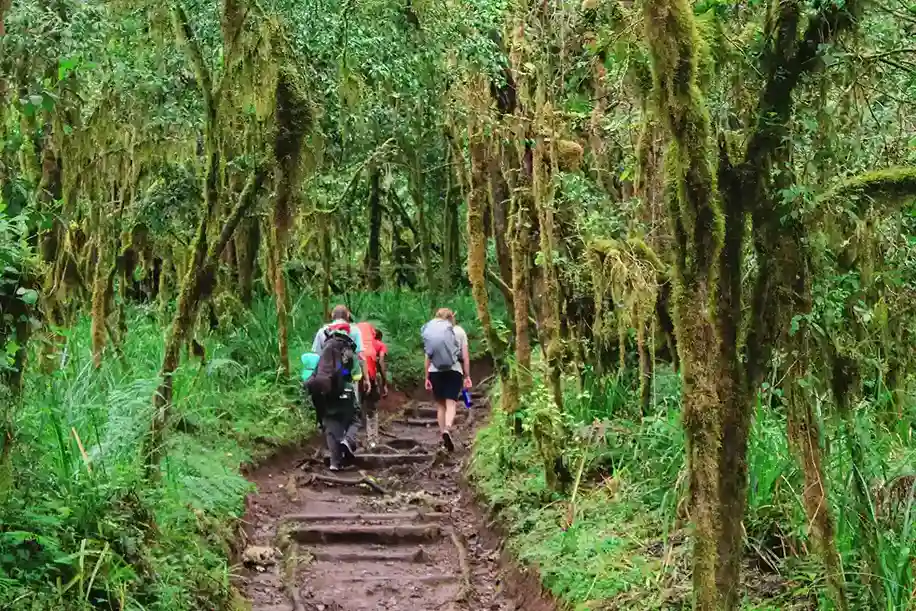
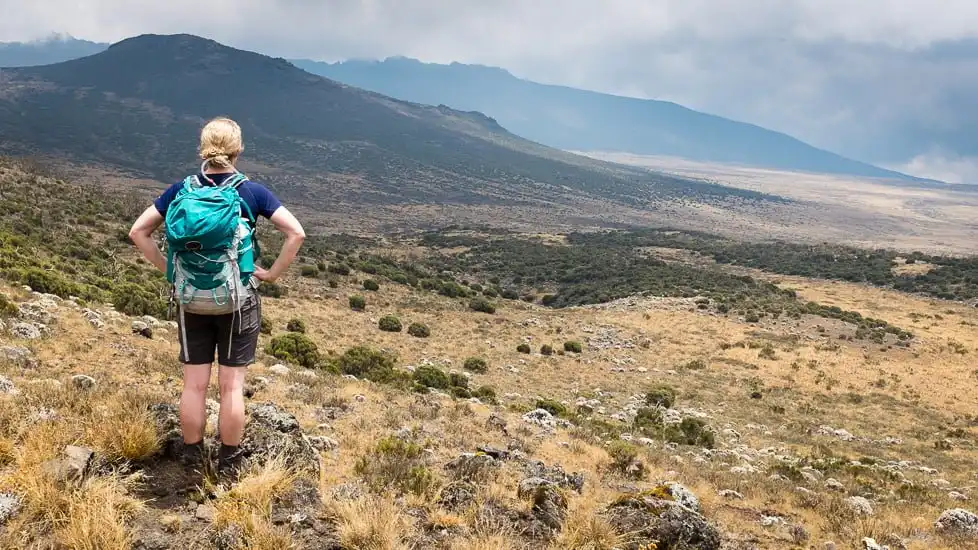
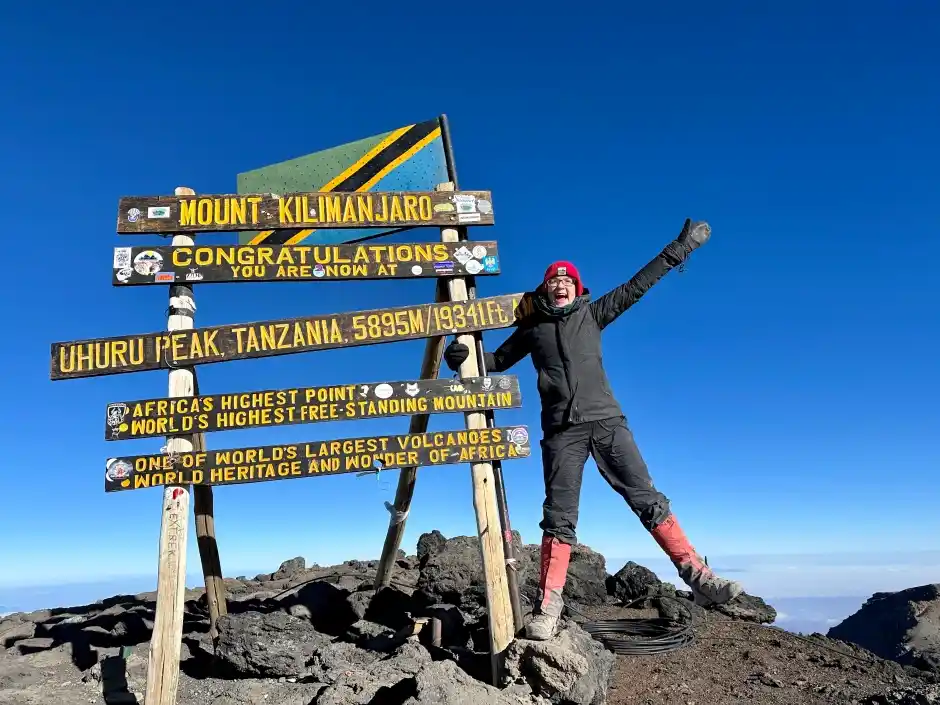
Experience the Lemosho Route Climb
Watch the beauty of the 8-day Kilimanjaro climb via the Lemosho Route unfold, from lush rainforests to the summit of Uhuru Peak, with Capable Africa Tours.
What to Pack for your 8-day Kilimanjaro Climb
Clothing Layers System:
The key to comfort while climbing Kilimanjaro lies in proper layering for temperatures ranging from 80°F in rainforests to -10°F at the summit. Base layers should include moisture-wicking synthetic or merino wool shirts and pants, avoiding cotton materials that retain moisture and lose insulation properties.
Insulation layers require fleece or down jackets, with down being superior for warmth-to-weight ratio but requiring dry conditions. Shell layers must include waterproof, breathable jackets and pants rated for mountain conditions, with full-zip options for ventilation control.
Footwear Requirements:
Broken-in hiking boots with ankle support and waterproof membranes are essential, along with camp shoes like lightweight sandals or slip-on shoes for evening comfort. Gaiters prevent debris and moisture from entering boots, while quality hiking socks (wool or synthetic blends) prevent blisters and provide cushioning.
Essential Gear:
Sleeping bags rated to -10°F ensure warmth during cold mountain nights, while sleeping pads provide insulation from ground cold. Headlamps with extra batteries, sunglasses with UV protection, and wide-brimmed hats protect against intense high-altitude sun exposure.
Trekking poles reduce knee stress during long descents and provide stability on challenging terrain. Water bottles or hydration systems with insulation prevent freezing, while water purification tablets ensure safe drinking water throughout the journey.
Personal Items:
Comprehensive first aid kits should include altitude sickness medications, pain relievers, and personal prescription medications. Sunscreen with high SPF ratings, lip balm with UV protection, and personal hygiene items maintain comfort and health during the expedition.
Best Time to Climb Kilimanjaro
The Kilimanjaro Lemosho Route 8-day experience varies significantly depending on seasonal weather patterns, with two distinct dry seasons offering optimal climbing conditions. Understanding these patterns helps you choose the best time to climb Mount Kilimanjaro while maximizing success chances and minimizing weather-related challenges.
Primary Climbing Season (June-October):
The long dry season from late June through October provides the most stable weather conditions, with clear skies, minimal precipitation, and excellent visibility for photography and navigation. July and August represent peak climbing months with the highest success rates, but also the most crowded trails and premium pricing.
September and October offer excellent weather with fewer crowds, making them ideal for climbers seeking a more intimate mountain experience. Temperatures during this period range from comfortable hiking conditions in lower elevations to extreme cold near the summit.
Secondary Season (December-March):
The short dry season from December through mid-March provides another excellent climbing window, with generally clear conditions and moderate temperatures. This period often features spectacular views and fewer crowds than the peak season, though occasional afternoon clouds may develop.
What are the Seasons to Avoid?
Late March through May brings heavy rainfall that makes trails muddy, dangerous, and unpleasant. November typically experiences short rains that can create challenging conditions and reduced visibility, though some experienced climbers prefer this quieter period.
Weather Considerations:
Mount Kilimanjaro weather can change rapidly regardless of season, with temperature variations of 50-60 degrees between base and summit. Wind conditions intensify with altitude, particularly during summit attempts when wind chill factors create extreme conditions requiring proper preparation and equipment.
Best Time to Book your 8-day Kilimanjaro Climb
Popular climbing dates fill quickly, especially during peak seasons, requiring bookings 6-12 months in advance for preferred departure dates.
Boook NowSafety & Health Tips for Successful 8-Day Kilimanjaro Climb
Altitude Acclimatization:
The Kilimanjaro Lemosho Route distance covers approximately 42 miles with careful elevation gains designed to minimize altitude sickness risks. Our itinerary follows proven acclimatization principles, with maximum daily elevation gains of 2,000-3,000 feet and strategic “climb high, sleep low” days that significantly improve success rates.
Professional guides monitor climbers daily using pulse oximeters and symptom assessments, with immediate descent protocols for serious altitude-related symptoms. Emergency oxygen supplies are carried throughout the expedition, with guides trained in high-altitude rescue techniques and communication systems for emergency evacuations.
Medical Preparedness:
Comprehensive medical kits include altitude sickness medications, pain relievers, antibiotics, and wound care supplies. Guides receive wilderness first aid certification and regular training updates, with established evacuation procedures for serious medical emergencies.
Pre-climb medical consultations are strongly recommended, particularly for climbers with heart conditions, respiratory issues, or other health concerns. Travel insurance with high-altitude coverage and emergency evacuation benefits is mandatory for all participants.
Trail Safety Measures:
Experienced guides know every section of the route, including potential hazards like loose rocks, steep sections, and weather-prone areas. Safety briefings occur daily, covering proper hiking techniques, hydration requirements, and recognition of altitude sickness symptoms.
Equipment Safety:
All camping and climbing equipment undergoes regular inspection and replacement schedules, with backup supplies available for critical items. Weather monitoring helps guides make informed decisions about route timing and potential weather-related delays.
Emergency Procedures:
Satellite communication devices enable contact with rescue services and medical facilities, while established evacuation routes allow rapid descent when necessary. Guide-to-climber ratios ensure adequate supervision and assistance throughout the expedition.
Essential Travel Requirements: What do you need to have when coming in Tanzania for the 8-Day Kilimanjaro Climb
Visa Requirements:
Most visitors require tourist visas for Tanzania, available upon arrival at Kilimanjaro International Airport for $50-100, depending on nationality. Online visa applications through the Tanzania Immigration website can expedite the process and reduce airport waiting times. Passports must be valid for at least six months beyond travel dates with blank pages for visa stamps.
Health Documentation:
Yellow fever vaccination certificates are required for travelers arriving from yellow fever endemic countries, while other vaccinations are recommended but not mandatory. Malaria prophylaxis is advised for pre- and post-trek periods in lower elevations, though not necessary during the actual climb above 8,000 feet.
Travel Insurance Requirements:
Comprehensive travel insurance with high-altitude coverage up to 20,000 feet is mandatory for all climbers. Policies must include emergency evacuation coverage, medical treatment abroad, and trip cancellation protection. Adventure sports coverage specifically mentioning mountaineering activities is essential for claim validity.
Documentation Checklist:
Valid passport, visa documentation, travel insurance certificates, vaccination records, and emergency contact information should be organized in waterproof document holders. Digital copies stored separately provide backup access to critical information.
Currency and Banking:
US dollars are widely accepted, with credit cards available in Arusha but not on the mountain. ATMs in Arusha provide local currency for tips and incidental expenses, while small denomination bills are preferred for porter and guide gratuities.
Communication:
International roaming charges can be expensive, with local SIM cards available in Arusha for affordable communication. Satellite communication devices are carried by guides for emergency situations, though personal communication is limited during the climb.
Customs Regulations:
Personal climbing equipment is duty-free, while expensive electronics may require a declaration upon arrival.
Wildlife Expectations on your Mount Kilimanjaro Trek
The Kilimanjaro Lemosho Route offers limited but memorable wildlife encounters, primarily concentrated in the lower elevation rainforest zones during the first two days of your journey. Unlike traditional safari experiences, Kilimanjaro’s wildlife viewing focuses on unique high-altitude species and forest inhabitants adapted to mountain environments.
Rainforest Zone Wildlife (Days 1-2):
Blue monkeys and black-and-white colobus monkeys inhabit the dense forest canopy, often visible during morning and evening hours when they’re most active. These primates play crucial roles in forest ecology through seed dispersal and provide excellent photographic opportunities for patient observers.
Bird species include the beautiful Hartlaub’s turaco, with its distinctive red wing patches, and various sunbird species that feed on flowering plants throughout the forest understory. The forest also hosts several endemic species found nowhere else on Earth.
Higher Elevation Encounters:
As you ascend beyond the forest zone, wildlife becomes increasingly sparse due to harsh environmental conditions. However, ravens and other high-altitude bird species occasionally appear near camps, adapted to survive in thin air and extreme temperature variations.
Unique Sightings:
Leopard tracks are occasionally spotted in snow near the summit, though actual sightings are extremely rare. These elusive cats represent the ultimate high-altitude adaptation, hunting small mammals in one of Earth’s most challenging environments.
Best Wildlife Viewing Times:
Early morning and late afternoon provide optimal wildlife viewing opportunities when animals are most active. The transition periods between forest zones offer the highest probability of encounters, particularly around water sources and feeding areas.
Photography Considerations:
High-altitude conditions require camera equipment protection from extreme cold and condensation. Wildlife photography demands patience and respect for animals’ natural behaviors, maintaining appropriate distances to avoid disturbing their daily routines.
Means of Transport Before & After your Mount Kilimanjaro Trek
Airport Transfers:
Professional drivers meet you at Kilimanjaro International Airport with clearly marked signs, providing comfortable transportation in modern vehicles equipped with air conditioning and luggage space. The 45-minute journey to Arusha includes scenic views of Mount Meru and local villages, with stops available for currency exchange or supply purchases.
Pre-Trek Transportation:
Morning departure from Arusha to Londorossi Gate involves a 3-hour drive through rural Tanzania, showcasing local agriculture and traditional villages. Vehicles are 4WD safari trucks designed for rough road conditions, featuring comfortable seating, charging ports for electronic devices, and coolers with cold water and snacks.
Mountain Transportation:
All equipment and supplies are transported by professional porters who carry loads according to strict weight limits and safety regulations. These experienced mountain professionals know every trail section and weather pattern, ensuring efficient and safe equipment transport throughout your journey.
Vehicle Specifications:
Safari vehicles accommodate 6-8 passengers with individual window seats, pop-up roofs for photography, and secure storage compartments. Vehicles undergo regular maintenance and safety inspections, with backup transportation available for emergencies.
Return Transportation:
Post-trek pickup at Mweka Gate includes celebration refreshments and comfortable seating for tired climbers. The return journey to Arusha allows for reflection on your achievement while enjoying Tanzania’s beautiful countryside scenery.
Special Considerations:
Motion sickness medications are recommended for sensitive travelers, as mountain roads can be winding and bumpy. Vehicles carry first aid supplies and communication equipment for emergency situations, while experienced drivers navigate challenging road conditions with expertise and caution.
Why Choose Us for your 8-Day Kilimanjaro Climb
Our company specializes exclusively in Mount Kilimanjaro Lemosho Route expeditions, bringing over 15 years of mountain guiding experience and an unmatched safety record to every climb. Founded by certified mountain guides who have summited Kilimanjaro over 200 times combined, we understand every aspect of this challenging mountain and the preparation required for success.
Certifications and Credentials:
All lead guides hold Wilderness First Aid certifications, with several possessing advanced wilderness medical training and international mountain guide certifications. Our company maintains active memberships in the Kilimanjaro Association of Tour Operators (KIATO) and adheres to strict ethical guidelines regarding porter treatment, environmental protection, and safety standards.
Guide Expertise:
Our guide team averages over 8 years of Kilimanjaro experience, with intimate knowledge of weather patterns, route conditions, and emergency procedures. Many guides are local Chagga people with generational connections to the mountain, providing cultural insights and traditional knowledge that enhance your climbing experience.
Safety Record:
We maintain a 99.8% safety record with zero serious accidents in over 1,000 successful expeditions. Our conservative approach to weather decisions and strict adherence to acclimatization protocols contribute to both high success rates and exceptional safety standards.
Environmental Commitment:
We follow Leave No Trace principles rigorously, with waste management systems that ensure minimal environmental impact. Our porter treatment exceeds industry standards, providing fair wages, proper equipment, and weight limits that respect their health and dignity.
Equipment Standards:
All equipment undergoes regular inspection and replacement schedules, with premium gear sourced from reputable outdoor manufacturers. Our investment in quality equipment directly contributes to climber comfort, safety, and success rates.
Client Success:
Over 85% of our clients successfully reach Uhuru Peak, with 95% reporting that the experience exceeded their expectations.
Ready for Your 8-Day Kilimanjaro Climb?
Join Capable Africa Tours for the ultimate 8-day Kilimanjaro climb via the Lemosho Route in 2026. Conquer Uhuru Peak, explore diverse landscapes, and enjoy expert-guided support with an 85–90% success rate.
- High summit success rate of 85–90%
- Expert guides and porters for safety
- Scenic Lemosho Route with diverse ecosystems
- Small groups for personalized experiences
- Supports local conservation efforts
Limited spots available for this best 8-day Kilimanjaro trek—book now to secure your adventure!
Book This Climb Now
